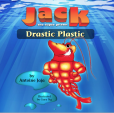ANSTO’s advanced radiation imaging solution CORIS360® - wins two Gold Good Design Awards
ANSTO’s CORIS360®, an advanced radiation imaging solution, has been awarded two Gold Good Design Awards from Good Design Australia, winning in the categories of Product Design/ Commercial and Industrial as well as Engineering Design.




